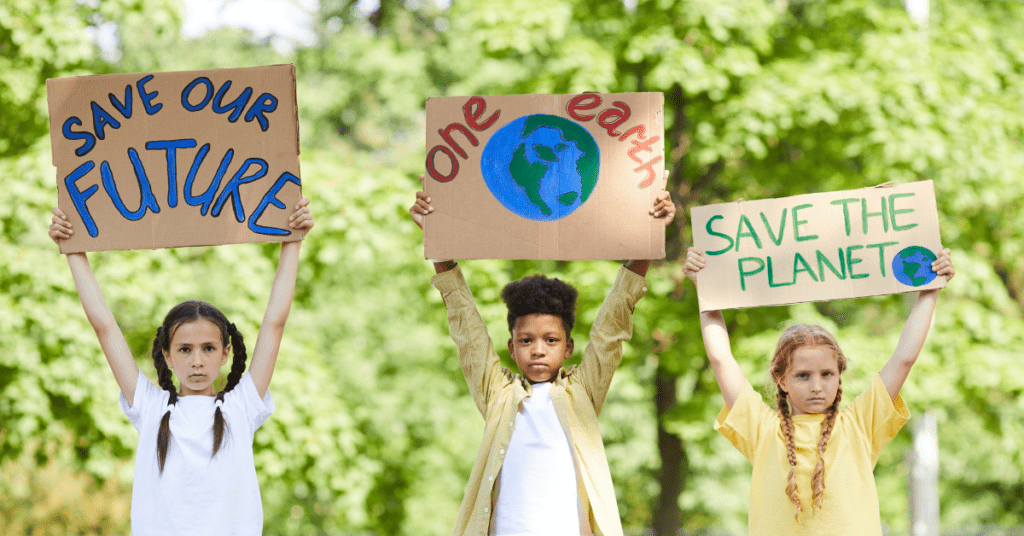Introduction
The delicate balance of nature has fascinated humans for centuries, giving rise to the science of ecology. Ecology, the study of interactions between organisms and their environment, offers insights into the complex web of life on Earth. From the tiniest microbes to the largest mammals, every organism plays a crucial role in maintaining ecological harmony.
In this blog post, we’ll delve into the intricacies of ecology, exploring its fundamental principles, the importance of biodiversity, human impacts on ecological systems, and the ongoing efforts to conserve and sustain our natural world. Through case studies and a look at future challenges, we aim to shed light on the vital role ecology plays in shaping our planet’s health and our own well-being.
What is Ecology?
Ecology is a multidisciplinary science that examines the relationships between living organisms and their physical and biological environments. It encompasses a wide range of scales, from the study of individual species to entire ecosystems and even global processes. The field of ecology seeks to understand how organisms interact with each other and their surroundings, and how these interactions influence the distribution, abundance, and diversity of life on Earth.
At its core, ecology is about connections. It explores the intricate networks of relationships that bind organisms together in complex ecosystems. These relationships can be symbiotic, where both parties benefit, or competitive, where organisms vie for limited resources. Understanding these dynamics is crucial for predicting how ecosystems will respond to environmental changes, whether natural or human-induced.
Ecologists use a variety of tools and techniques to study these interactions, including field observations, laboratory experiments, and mathematical models. By collecting data on species distribution, behavior, and physiology, ecologists can uncover patterns and trends that provide valuable insights into ecological processes.

The Importance of Biodiversity
Biodiversity, or biological diversity, refers to the variety of life on Earth, encompassing the diversity of species, genes, and ecosystems. It’s a measure of the health and resilience of ecosystems and plays a crucial role in maintaining ecological balance and stability. A rich biodiversity provides a range of ecosystem services that are essential for human well-being, including clean air and water, pollination of crops, and natural pest control.
Each species, no matter how small or seemingly insignificant, has a unique role to play in its ecosystem. From decomposers that break down organic matter to predators that regulate population sizes, every organism contributes to the functioning of its ecosystem. A loss of biodiversity can disrupt these delicate relationships, leading to reduced ecosystem resilience and increased vulnerability to environmental changes.
Human activities, such as deforestation, habitat destruction, pollution, and climate change, are major drivers of biodiversity loss. As we alter natural landscapes and exploit resources at an unprecedented rate, we threaten the survival of countless species and jeopardize the ecological balance that sustains life on Earth.
Conserving and restoring biodiversity is therefore a pressing global priority. Efforts to protect endangered species, establish protected areas, and promote sustainable land-use practices are essential steps towards preserving our planet’s rich biological heritage.
In the following sections, we’ll explore the human impact on ecology and discuss the conservation efforts and sustainability initiatives aimed at mitigating these impacts.
Human Impact on Ecology
Human activities have a profound impact on ecological systems, often leading to habitat destruction, pollution, and the depletion of natural resources. As the global population continues to grow and industrialization expands, the pressure on ecosystems intensifies, posing significant threats to biodiversity and ecosystem health.
Deforestation, for example, not only destroys critical habitats for countless species but also contributes to climate change by releasing stored carbon into the atmosphere. Similarly, pollution from industrial and agricultural sources contaminates waterways, affects air quality, and harms both terrestrial and aquatic ecosystems. Overfishing, poaching, and unsustainable agricultural practices further exacerbate ecological degradation, leading to declines in wildlife populations and the disruption of ecological processes.
Climate change, driven by the burning of fossil fuels and deforestation, poses one of the most significant threats to global ecology. Rising temperatures, changing precipitation patterns, and more frequent extreme weather events can have profound impacts on ecosystems, altering species distributions, disrupting food webs, and threatening the survival of vulnerable species.
Despite these challenges, there is growing recognition of the need for sustainable development practices that balance human needs with ecological conservation. Conservation initiatives, environmental regulations, and community-based conservation efforts are increasingly being implemented to mitigate the human impact on ecology and promote a more harmonious relationship between humans and the natural world.
In the next sections, we’ll explore the ongoing conservation efforts and sustainability initiatives aimed at protecting and restoring our planet’s precious ecosystems.
Conservation Efforts and Sustainability
In response to the growing threats to biodiversity and ecosystem health, there has been a concerted global effort to promote conservation and sustainability. Conservation initiatives aim to protect and restore critical habitats, preserve endangered species, and promote biodiversity conservation at local, regional, and global scales.
Protected areas, such as national parks, wildlife reserves, and marine sanctuaries, play a crucial role in biodiversity conservation by providing safe havens for wildlife and preserving important ecological processes. These areas serve as living laboratories where researchers can study natural ecosystems and develop strategies for conservation and management.
In addition to protected areas, sustainable land-use practices are essential for maintaining ecosystem health and biodiversity. Agroforestry, organic farming, and sustainable forestry practices can help minimize the impact of agriculture and forestry on natural ecosystems, reducing deforestation, soil erosion, and habitat destruction.
Community-based conservation initiatives are also gaining momentum, empowering local communities to participate in conservation efforts and manage natural resources sustainably. By involving local communities in decision-making processes and promoting environmental education and awareness, these initiatives help foster a sense of stewardship and responsibility towards the environment.
Furthermore, international agreements and conventions, such as the Convention on Biological Diversity and the Paris Agreement, provide frameworks for cooperation and coordination among nations to address global environmental challenges and promote sustainable development.
In the following sections, we’ll explore case studies of successful conservation efforts and sustainability initiatives that have made a positive impact on ecological systems and biodiversity conservation.
Case Studies: Success Stories in Ecology
While the challenges facing global ecology are daunting, there are many inspiring success stories that demonstrate the positive impact of conservation efforts and sustainability initiatives. These success stories highlight the resilience of natural ecosystems and the effectiveness of targeted conservation strategies in protecting biodiversity and restoring degraded habitats.
One notable success story is the recovery of the bald eagle population in the United States. Through rigorous conservation efforts, including habitat protection, banning of the pesticide DDT, and captive breeding programs, the bald eagle population has rebounded from the brink of extinction. Today, the bald eagle serves as a powerful symbol of conservation success and a testament to the importance of proactive conservation measures.
Another success story is the restoration of the Loess Plateau in China. Once plagued by severe soil erosion and desertification due to unsustainable agricultural practices, the Loess Plateau has been transformed through large-scale restoration efforts, including reforestation, terracing, and soil conservation measures. These efforts have not only restored the ecological health of the region but also improved local livelihoods and contributed to sustainable development.
In Costa Rica, a commitment to environmental conservation and ecotourism has led to the protection of vast tracts of rainforest and the recovery of endangered species such as the jaguar and the resplendent quetzal. Through innovative conservation programs and community-based ecotourism initiatives, Costa Rica has become a global leader in biodiversity conservation and sustainable tourism.
These success stories demonstrate that with political will, community engagement, and innovative conservation strategies, it is possible to reverse ecological degradation, protect biodiversity, and build a more sustainable and harmonious relationship with the natural world.
Future Outlook and Challenges
As we look to the future, the outlook for global ecology is both hopeful and challenging. While there have been significant successes in biodiversity conservation and ecosystem restoration, many threats persist, and new challenges continue to emerge. Climate change, habitat destruction, pollution, and unsustainable resource exploitation remain pressing issues that require urgent action and international cooperation.
Climate change poses one of the most significant challenges to global ecology, with rising temperatures and changing precipitation patterns threatening to alter ecosystems and disrupt ecological processes. Mitigating the impacts of climate change requires a concerted global effort to reduce greenhouse gas emissions, transition to renewable energy sources, and promote climate-resilient agricultural and land-use practices.
Habitat destruction and fragmentation continue to threaten biodiversity, with many species facing extinction due to loss of habitat and human encroachment. Protecting and restoring critical habitats, establishing wildlife corridors, and promoting sustainable land-use practices are essential for preserving biodiversity and ensuring the long-term survival of vulnerable species.
Pollution, both on land and in water, remains a major threat to ecosystem health and human well-being. Addressing pollution requires stricter environmental regulations, improved waste management practices, and greater public awareness and participation in pollution prevention and clean-up efforts.
Despite these challenges, there is growing momentum for positive change, with increasing recognition of the need for sustainable development practices that balance economic growth with environmental conservation. Innovations in conservation technology, community-based conservation initiatives, and international cooperation offer promising avenues for addressing the complex and interconnected challenges facing global ecology.
In conclusion, the future of global ecology depends on our collective ability to address these challenges, implement sustainable solutions, and foster a deeper appreciation and respect for the natural world. By working together, we can build a more sustainable and harmonious relationship with the Earth and ensure a healthy and prosperous future for all living beings.
Conclusion
Ecology, the study of the intricate relationships between living organisms and their environment, is crucial for understanding the complex web of life on Earth and the factors that shape ecosystem health and biodiversity. Despite the numerous challenges facing global ecology, including climate change, habitat destruction, and pollution, there have been inspiring success stories and innovative conservation efforts that demonstrate the resilience of natural ecosystems and the potential for positive change.
The future of global ecology hinges on our collective ability to address these challenges, implement sustainable solutions, and foster a deeper appreciation and respect for the natural world. By promoting conservation, sustainability, and environmental stewardship, we can build a more harmonious relationship with the Earth and ensure a healthy and prosperous future for all living beings.
As stewards of the planet, we have a responsibility to protect and preserve the rich biodiversity and ecological balance that sustains life on Earth. Through education, awareness, and action, we can create a more sustainable and resilient world where humans and nature coexist in harmony.
Further Reading
- ecology
- Ecology is the study of the environment
- Ecology is the branch of biology that studies how organisms interact with their environment
Explore Micro2media.com
- Greening Up Your Routine: A Guide to Eco-Friendly Products
- Harnessing the Potential of Legumes: From Nutritional Riches to Sustainable Solutions
- Our Disappearing World: Can We Save Enough Wildlife?

